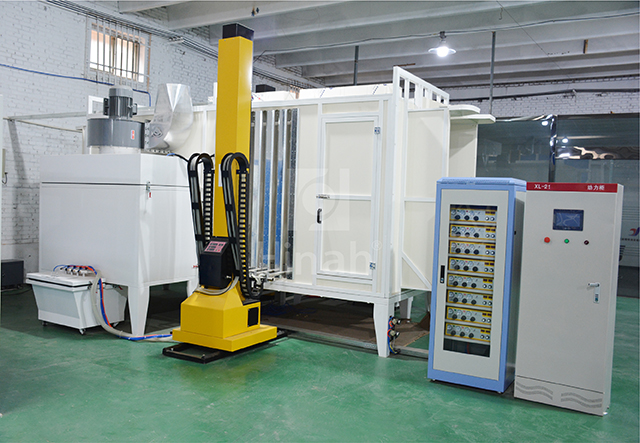- Home
- About-us
- Products
- Solutions
- Industries
- Video
- Service
- Contact-us
Views: 90 Author: Site Editor Publish Time: 2023-09-21 Origin: Site
Electrostatic spraying is a common coating process widely used in automotive manufacturing, aerospace, electronics and construction.
It evenly sprays paint onto the surface of an object by electrostatic force, but a variety of factors need to be considered in order to obtain an ideal coating effect.
In this paper, we will discuss the factors that affect the effect of electrostatic spraying and provide some optimization methods to help improve the coating quality.

1. Material selection One of the primary factors affecting the effectiveness of electrostatic spraying is the coating used. Different types of coatings have different conductivities and viscosities, which can affect electrostatic charging and coating transfer. Selection of the right coating is critical and should usually be based on the nature and requirements of the object to be coated. It is also important to ensure the quality and stability of the coating.
2. Electrostatic charging The core of electrostatic spraying is the electrostatic charging process. Paint particles are charged by electrostatic charging and then attracted to the surface of the object. Factors affecting electrostatic charging include:
- Design of the electrode system: The electrode system must be designed to distribute the charge evenly to ensure that the paint particles are charged uniformly.
- Voltage and current: The voltage and current settings between the electrodes directly affect the charging effect. It is often necessary to adjust the voltage and current according to the size and shape of the painted object.
- Charge Gun Condition: Maintaining the cleanliness and condition of the charge gun is critical to charging results. Dirt or grease that accumulates on the charge gun may interfere with charge transfer.
3. Nozzle and Air Pressure The design of the nozzle and control of the air pressure are critical to the uniform distribution of paint and control of splashing. The following are factors to consider:
- Nozzle shape and size: The shape and size of the nozzle affects the spray angle and velocity of the paint particles. Proper selection of the nozzle type ensures that the paint is evenly distributed over the surface of the object.
- Air pressure: Adjusting the air pressure controls the degree of spray atomization. Too high a pressure may result in excessive spraying, while too low a pressure may result in uneven particles.

4. Coating Environment The coating environment also has a significant effect on spraying results. Here are some factors to consider:
- Temperature and humidity: Temperature and humidity can affect the drying time and viscosity of the coating, so it is necessary to apply the coating under suitable temperature and humidity conditions.
- Air quality: Airborne particles and contaminants may adhere to the paint and affect the quality of the finish. Air quality can be improved by using an air filtration system.
5. Pre-treatment Before electrostatic spraying, proper pre-treatment of the painted object is required to ensure that the paint will adhere and remain durable. This includes:
- Surface Cleaning: Ensure that the surface of the object is clean and free of grease, dust or other contaminants.
- Surface preparation: Sometimes a primer or coating is required to provide better adhesion and protection.
6. COATING OPERATING TECHNIQUES Operating techniques are critical to the effectiveness of electrostatic spraying. The operator should be trained in the following techniques:
- Uniform motion: Continuous uniform motion ensures even distribution of paint and avoids spotting and dripping.
- Appropriate spraying distance: Control the distance between the spray gun and the object to ensure optimum coating results.
- Interlocking and overlapping: Interlocking and overlapping movements when applying the coating will avoid uneven coating.
7. Inspection and quality control Finally, regular inspection and quality control are key to ensuring consistent results from electrostatic spraying. Use inspection tools and techniques to monitor coating quality and make necessary adjustments and maintenance.
To summarize, the factors affecting the effectiveness of electrostatic spraying involve a variety of aspects such as coatings, electrostatic charging, nozzles, environment, pretreatment, operating techniques and quality control. By considering these factors comprehensively and taking appropriate measures to optimize them, the effectiveness of electrostatic spraying can be improved and high quality coating results can be obtained. This not only helps to reduce coating costs, but also improves product appearance and performance.